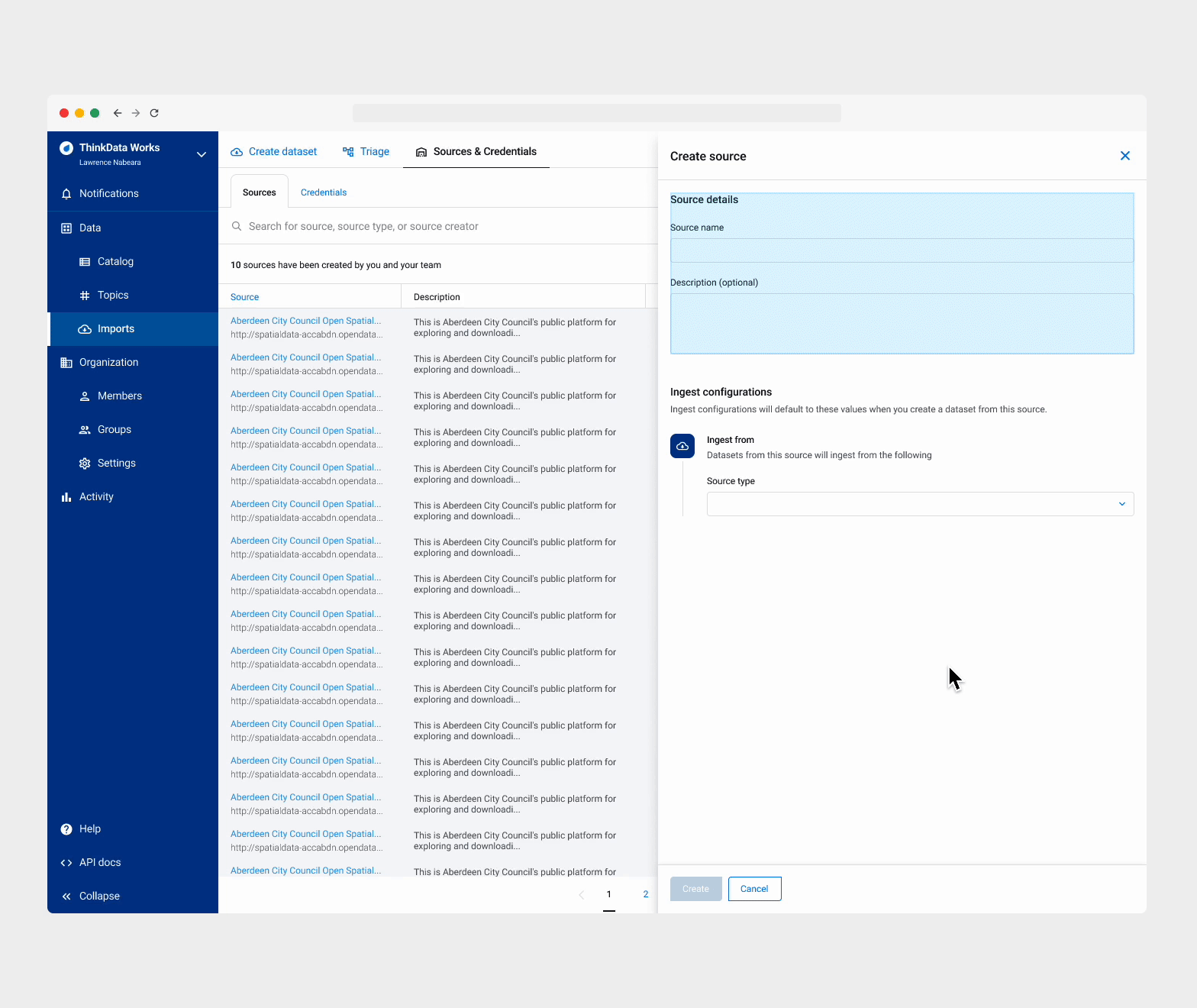
Reducing friction on source creation forms so data catalog users receive the most up-to-date and reliable data
Role
Product design intern
Collaborators
Senior product designer
Product manager
Engineering lead
Duration
6 weeks
In 2021, I interned with ThinkData Works, a B2B Toronto-based startup building the ThinkData Works Data Catalog. I was tasked to redesign the catalog’s source creation form – used by our business customers to connect their catalog to a data source. My goal was to reduce friction on the form that was blocking form completion. Completing the form was crucial for our customers to extract continuous, up-to-date datasets from their sources.
Problem
-
Creating a source depends on a user having an existing credential. If there is no existing credential to select, users are blocked from form completion until a credential is created, but users should not be expected to understand system dependencies.
-
The form lacked alignment with industry best practices for usability.
Business impact
Why was this problem important to solve?
-
Competitive analysis revealed deltas between our product and more advanced products in the data cataloging space. We needed to enhance the source creation form to achieve competitor parity.
-
Completing the form was crucial for our customers to extract continuous, up-to-date datasets from their sources. Creating a source served as the entry point for our customers to discover the product’s more advanced features.
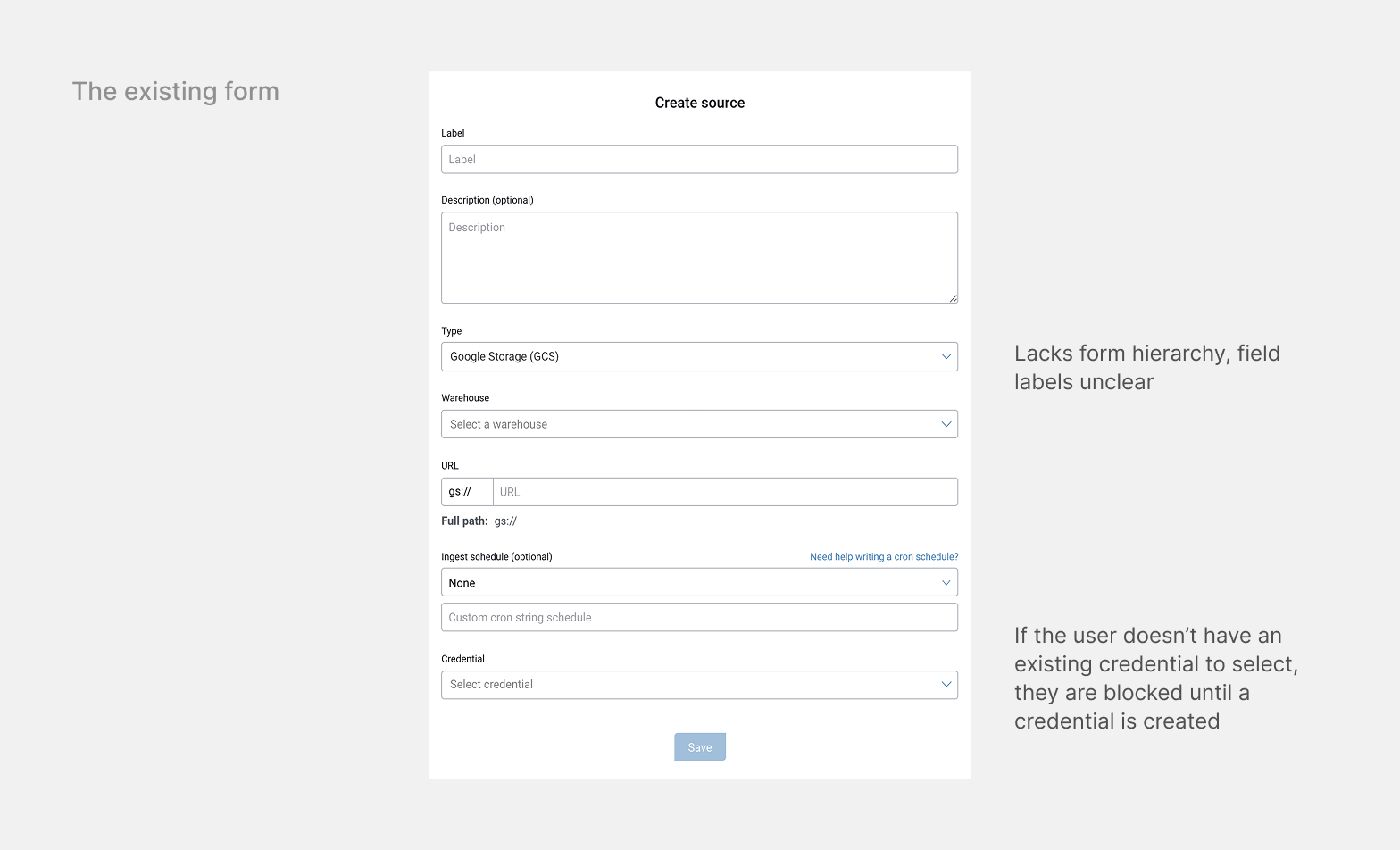
Decision-making principles
-
Explore how to unblock users from form completion if they don’t have an existing credential to select
-
Prioritize efforts on ingest configurations – we know these fields impose higher cognitive load on users
-
Reuse existing patterns to support our tech partners
Solution
Unblocking users from form completion
Users can now create a credential if they don’t have an existing one to select.
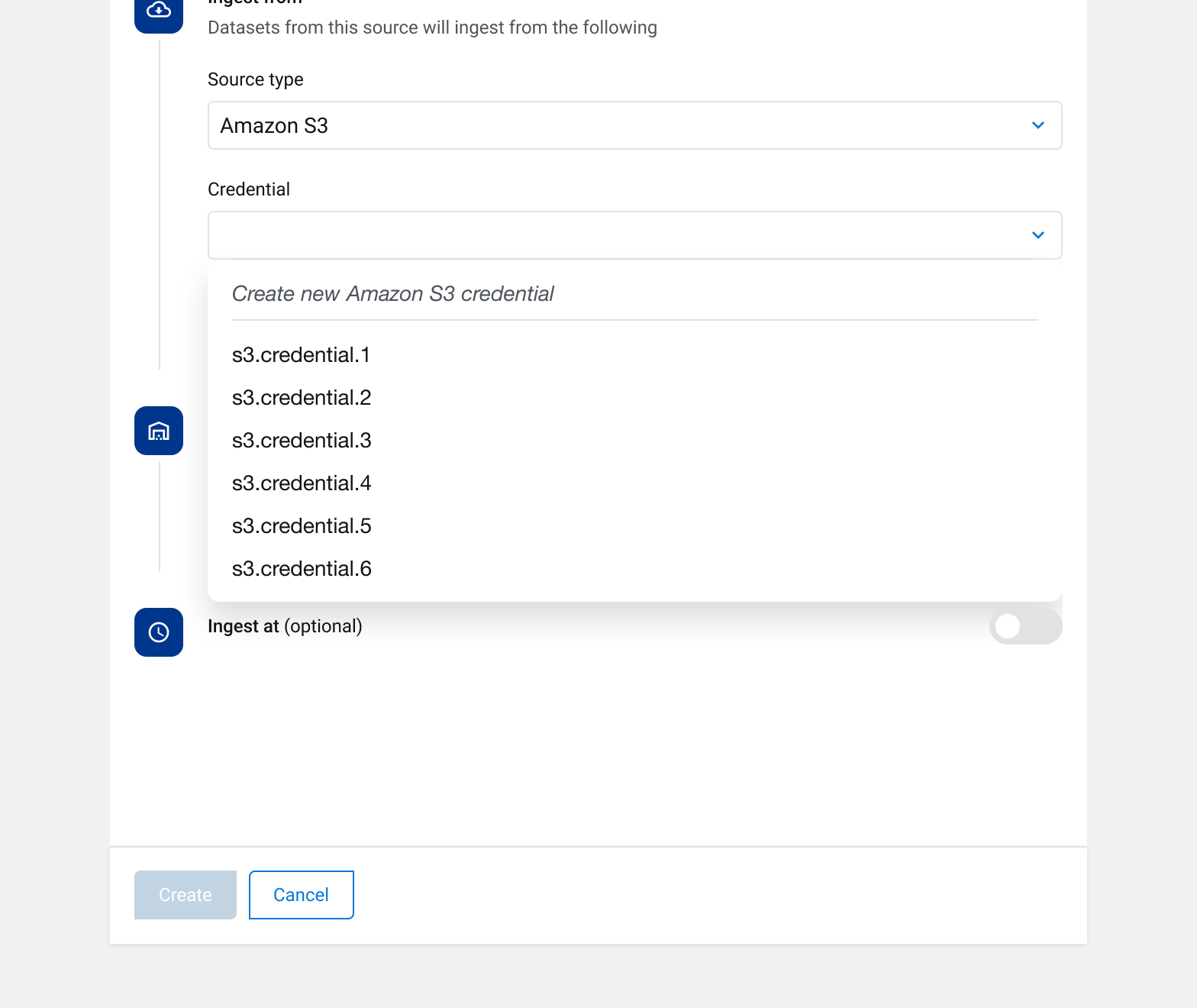
Progressive disclosure
Progressive disclosure minimizes cognitive load, hiding certain ingest configurations until they become relevant to the user.
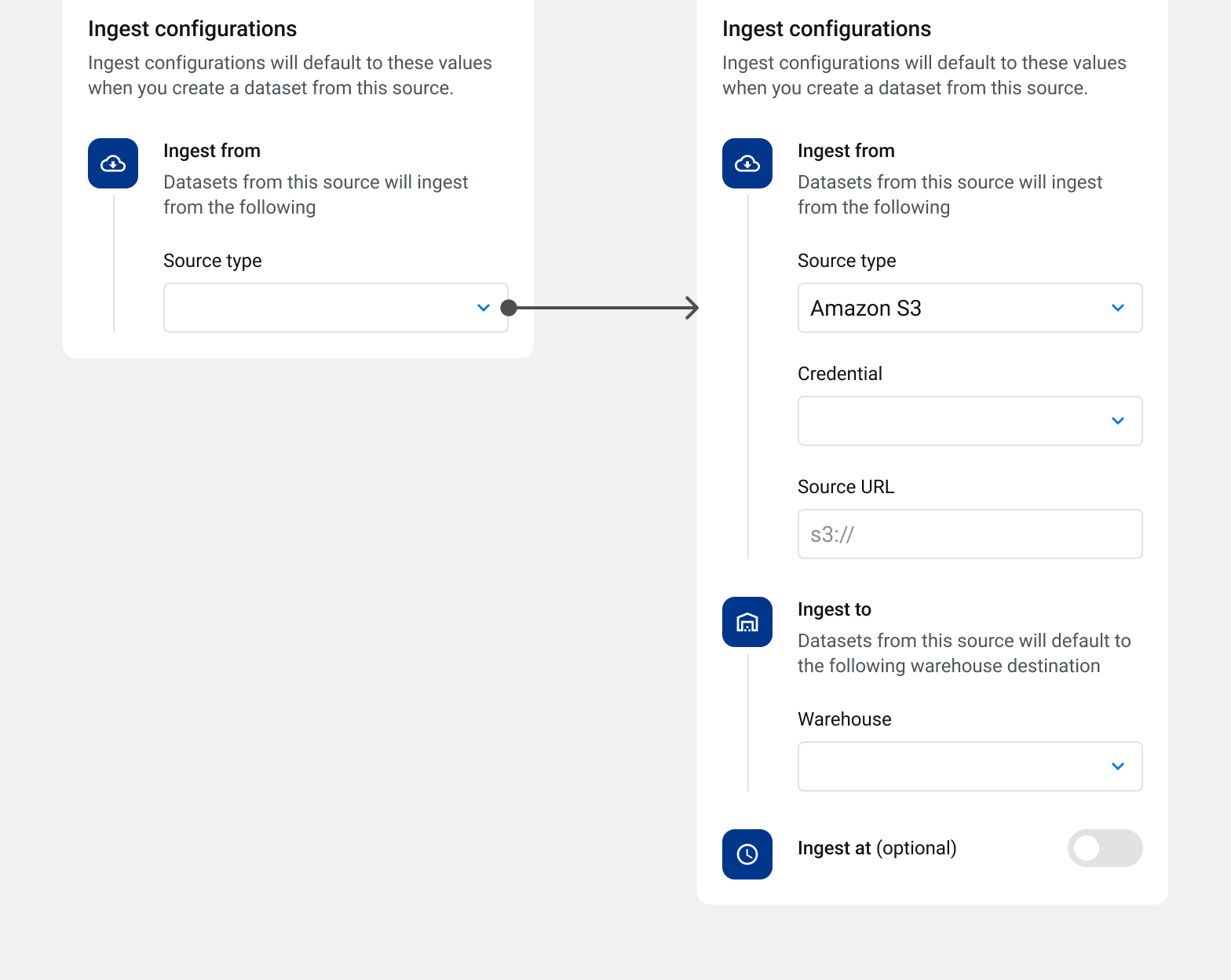
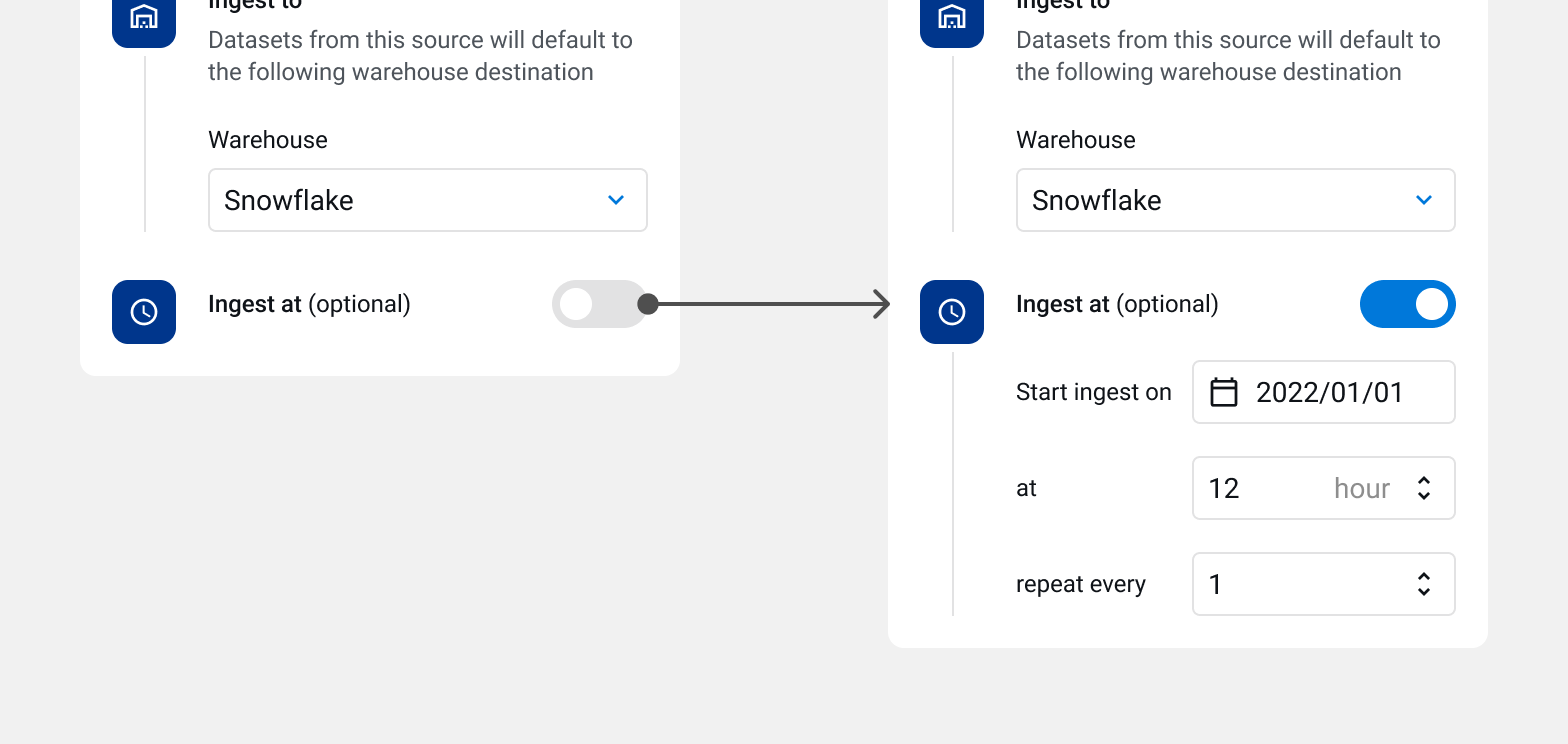
Helper text
Helper text supports understanding of ingest configurations.
Establishing a form hierarchy
The addition of h2s, h3s and reusing existing iconography patterns establish a form hierarchy to help users process ingest configurations in a clear and intuitive way.
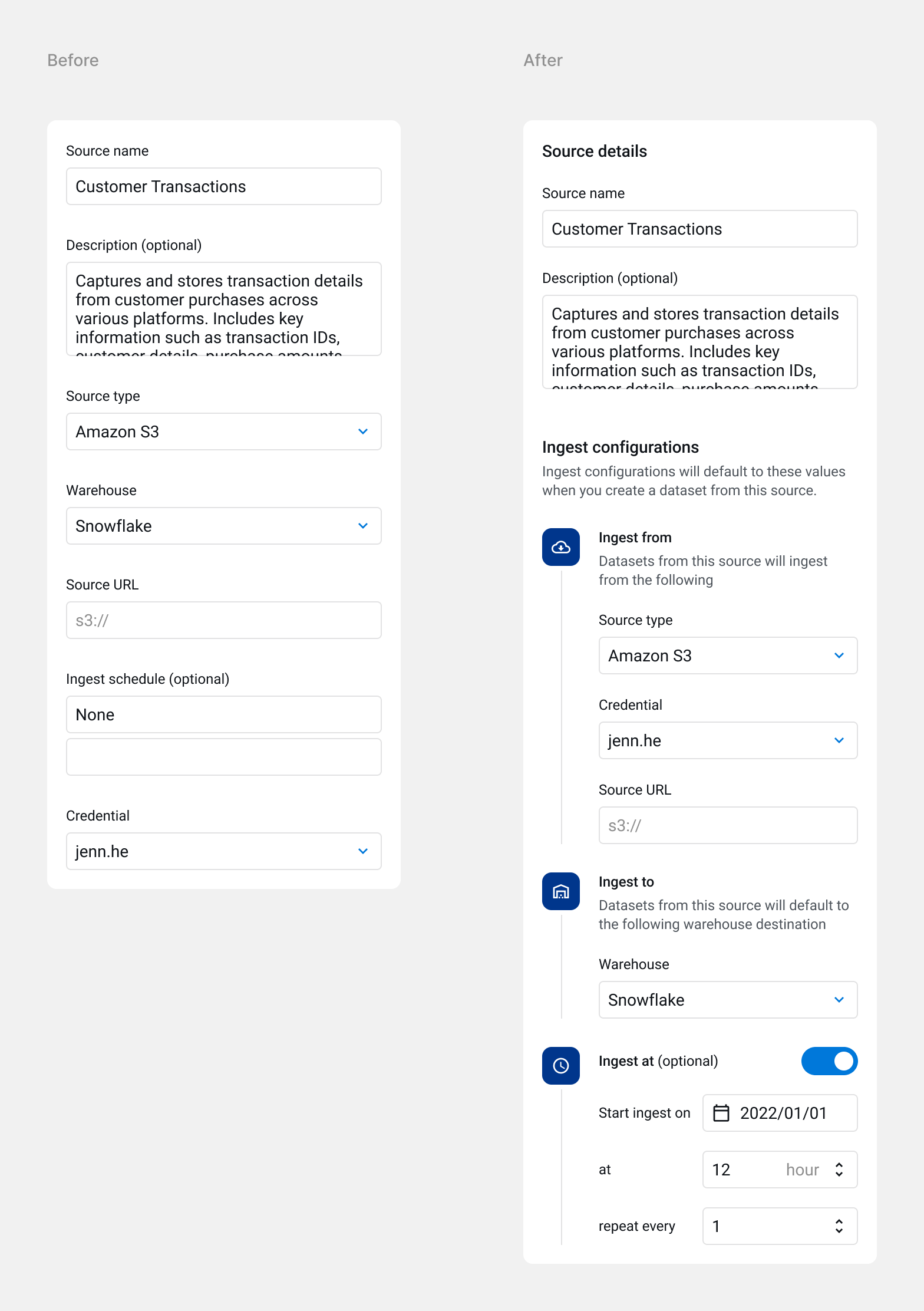
Learnings
Constraints are redirection, not rejection
At an early-stage startup, I didn't have a user research team or access to customers for research. I used competitive analysis and relied on stakeholders to understand customer needs.